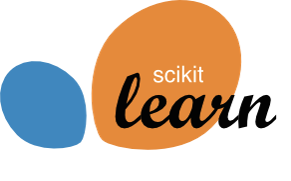TECHNICAL COMMITTEE / February 3, 2020
Technical Committee
February 3, 2020
Presentation of the technical achievements and ongoing work (O. Grisel)
Priority list for the consortium at Inria, year 2020–2021
From the discussion during the technical committee, the scikit-learn Consortium at Inria defined the following list of priorities for the coming year:
- Continue effort helping with project maintenance to keep the target to release twice a year (+ bugfix releases).
- Development of the model inspection tools (and related):
- Help, review, and document the support for feature names in pipelines: https://github.com/scikit-learn/scikit-learn/pull/14315
- Extend PDP tools to support categorical variables and add error bars: https://github.com/scikit-learn/scikit-learn/issues/14969
- Integrate guidelines on interpretation and uncertainty of coefficients of linear models in scikit-learn as a scikit-learn example or tutorial in the main repo: https://github.com/scikit-learn/scikit-learn/pull/15706
- Document with User Guide and examples to give intuitions, insights, caveats of the different methods: comparison of model agnostic tools such as SHAP, permutation importances… (pros and cons)
- Cross-reference more bleeding-edge inspection tools from external libraries such as SHAP, ELI5, InterpretML, from the documentation and examples in scikit-learn. Possibly add an example in scikit-learn to compare SHAP values to scikit-learn permutation importances and highlight pro-and-cons.
- Add support for HGBRT to SHAP: https://github.com/slundberg/shap/issues/1028
- Add ICE plots: https://github.com/scikit-learn/scikit-learn/pull/16164
- Finish review of the implementation of Poisson, Gamma, Tweedie regression losses for linear models and gradient boosting trees: https://github.com/scikit-learn/scikit-learn/pull/14300
- Help finalize and review the missing features for the new implementation of Gradient Boosting Trees (i.e. sample weights, monotonic constraints, interaction constraints, categorical data, and sparse data).
- Continue work on making scikit-learn estimators more scalable w.r.t. number of CPUs and less prone to over-subscription issues when using native threadpools (OpenMP / BLAS)
- Continue effort on benchmark and compliance tests:
- Benchmark against ONNX models and use results to optimize ONNX or sklearn
http://www.xavierdupre.fr/app/_benchmarks/helpsphinx/index.html - Find a way to keep the benchmark running: share the benchmark execution results as JSON + HTML report on a common public repo. Use github pages to publish an aggregate view of the results: https://github.com/jeremiedbb/scikit-learn_benchmarks
- Assist RAPIDS devs if they are interested in sharing the benchmark suite to keep an up-to-date comparison point.
- Benchmark against ONNX models and use results to optimize ONNX or sklearn
- Implementation of Balanced Random Forest and Balanced Bagging Classifier: https://github.com/scikit-learn/scikit-learn/pull/13227. Once done, reconsider if we need additional tools such as a generic resample API: SLEP005
- Improve support for quantification of uncertainties in predictions and calibration measures
- New calibration error for classification: https://github.com/scikit-learn/scikit-learn/pull/11096
- QuantileRegression for Linear Models: https://github.com/scikit-learn/scikit-learn/pull/9978
- QuantileRegression for HGBRT
- QuantileRegression for MLP (optional)
- Calibration reporting tool and documentation for quantile regression models
- Isotonic Calibration should not impact rank-based metrics: https://github.com/scikit-learn/scikit-learn/issues/16321
- Evaluate interoperability with other types of array (e.g. dask arrays and CuPy arrays) for some preprocessing methods once the n_features_in_ PR is merged (by customizing the _validate_input method. Possibly by leveraging the newly introduced __array_function__ protocol (NEP 18) or array modules (NEP 37): https://github.com/scikit-learn/scikit-learn/pull/16112
- Evaluate interoperability with other types of array (e.g. dask arrays and CuPy arrays) for pipeline / column transformer, cross-validation, and parameter search. Depending on the outcome of the discussion w.r.t. features names in Pipeline and XArray.
- OpenMP GPU offloading: evaluation of the experimental Cython branch
- Example on quantification of fairness issues and potential de-biasing
- Extend the “anti-pattern” / pitfalls examples in the scikit-learn documentation: https://github.com/scikit-learn/scikit-learn/issues/14081
- Improve documentation with extra-examples: time series feature engineering and cross-validation based model evaluation.
- Extend support of categorical encoding e.g. (impact coding) and better document the pros and cons of each approach in examples.
- Review literature for confidence interval for predictions: bootstrapping and conformal predictions (in collaboration with Léo Dreyfus-Schmidt at Dataiku). See https://arxiv.org/abs/1604.04173 and https://cdsamii.github.io/cds-demos/conformal/conformal-tutorial.html for instance.
- Callback and logging (interruption) monitor and checkpoint fitting loop. One application would be to better integrate with (internal and external) hyper-parameter search strategies that can leverage checkpointing to make model selection more resource efficient.
One the community side:
- Organise more regular technical sprints (possibly by inviting past sprint contributors to try to foster a long term relationship and hopefully recruit new maintainers).
- Renew the organization of beginners’ workshops for prospective contributors.
- Conduct a new edition of its 2013 survey among all scikit-learn users.
